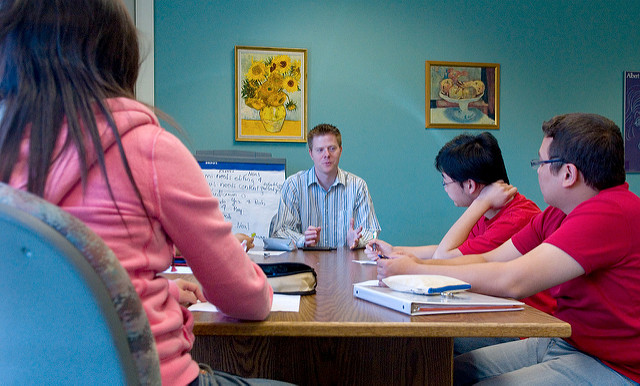Toolkit Item Overview

Problem of practice: there is a need to develop a shared, cross-sector understanding of the difference between college-reading reading and college-level reading in order to ensure that expectations and instructional approaches are aligned. Our toolkit item includes two components to address this problem of practice. We have developed a collection of resources to guide high school and college English departments in the creaton of a shared definition of college-ready and college-level reading, including a discussion protocol, a survey to generate shared data, and a white paper revealing relevant research. Using these resources should enable departments to facilitate collaborative discussion toward developing a working definition of these terms. Once an agreed upon definition is reached, educators can then collaborate on learning targets and instructional strategies to help students gain the college-ready reading skills necessary to begin their post-secondary education. Our second component in our toolkit is a standards “unpacking” activity that deeply immerses teachers into each reading standard. As they “unpack” a standard, teachers gain a better understanding of the reading skills and the vocabulary students need in order to meet the standard. Teachers can use this information to generate learning targets that guide instruction, student learning and formative assessments. We have also included a reflection activity for students so they, too, can assess if the learning targets have been met.
In order for teachers to prepare students for college, they must have a solid understanding of what it means to be college-ready in reading. Based on our survey, it is clear that high school and college instructors have varying views on the difference between college-ready and college-level reading. This affirms the need for a protocol to start the discussion and a “next steps” toolkit for teachers to put college-ready reading into action. This process must start with collaboration among teachers; without that, there is no guarantee that students are receiving viable and consistent reading instruction. Once teachers are in agreement on the goal, instruction can then be linked back to the state reading standards via the “unpacking” activity. Finally, through beneficial formative assessments, teachers can monitor student growth toward improved reading skills. It is our hope that both high school and college instructors use our discussion protocol to gain an improved understanding of college-ready and college-level reading. Once this happens, teachers gain valuable insights into the best instructional approaches for students who need help becoming college-ready by the end of high school, and college instructors gain more clarity about how to best help their students move from college-ready to college-level reading. If students master college-ready reading skills, there should be no need for developmental courses at the college level.
Resources Used to Inform this Toolkit
Much of our research comes from the 2013 special issue of the journal Across the Disciplines on College Reading and Writing Across the Disciplines; from this issue we used articles by S. Jamieson, S.J. Pearlman, and L.A. Rhodes. We also used research from Horning’s 2012 publication Reading, writing, and digitizing: Understanding literacy in the Electronic Age, along with research from R.M. Howard. All of our research is presented in the toolkit: White Paper: Defining College-level Reading.
Key Lessons We’ve Learned
One lesson learned is that the concern about reading skills is shared by all teachers in all disciplines, not just ELA teachers. This is not just an ELA issue, and the consequences of poor reading skills reach far beyond our schools and courses. It students struggle to comprehend what they read, then the precious content that we know is important for students to learn remains unattainable unless teachers are willing to teach the strategies necessary to assist students in comprehending complex texts. What we might conclude based on our survey, discussions, and anecdotal conversations is that teachers feel underprepared to address this issue as so few teachers (including ELA) have been specifically trained in literacy.
Comprehensive Guide to Utilizing Our Tool in Your Classroom

